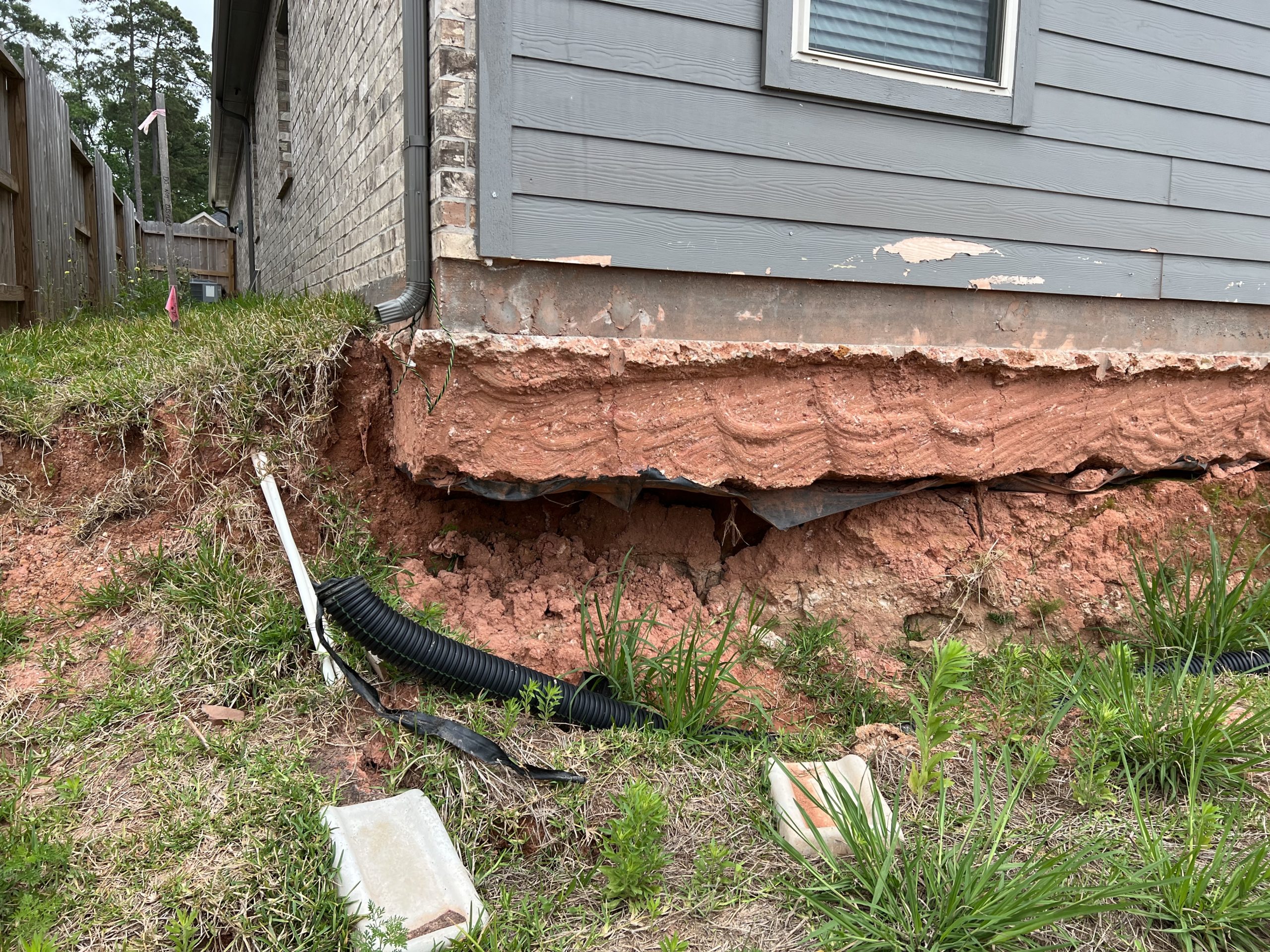
When soil erosion happens, it weakens your home’s foundation, causing cracks that harm the building’s structure. The compromised foundation may lead to further damage if left unattended.
Key Takeaways
- Soil erosion weakens foundation support.
- Erosion causes uneven settling of foundations.
- Hydrostatic pressure from saturated soil creates cracks.
- Compacted soil leads to foundation instability.
- Drainage issues increase soil saturation, leading to cracks.
Impact of Soil Erosion on Foundations
Soil erosion can greatly weaken foundations, leading to structural issues in buildings. When soil erodes around a foundation, it can create empty spaces beneath the building. These gaps can cause the foundation to settle unevenly, leading to cracks in the walls, floors, or ceilings of your home. As the foundation weakens, it struggles to support the weight of the structure above, which can result in serious structural damage over time.
As the soil erodes, it also exposes the foundation to moisture. This moisture can seep into the cracks and weaken the concrete or materials holding your foundation together. Additionally, the shifting of the foundation due to soil erosion can disrupt the plumbing and utility lines running beneath your home, causing leaks and further complications.
To prevent these issues, it’s essential to address soil erosion around your property promptly. By implementing proper drainage systems, such as downspouts, gutters, and grading the soil away from the foundation, you can help mitigate the effects of erosion on your home’s foundation. Regularly inspecting your foundation for any signs of cracks or settling and repairing them promptly can also help maintain the structural integrity of your home.
Settlement Due to Eroding Soil
Settling of foundations due to erosion can lead to structural issues in buildings. When the soil beneath a foundation erodes or settles unevenly, it can cause the foundation to shift and sink. This shifting can result in various problems such as cracks in the walls, uneven floors, or even structural instability.
One common consequence of settlement due to eroding soil is uneven floors. As the foundation settles unevenly, it can cause the floors above to become sloped or sunken in certain areas. This not only affects the aesthetics of the building but also poses safety risks and can make it challenging to install new flooring or furniture.
Moreover, settlement can lead to cracks in the walls of a building. When the foundation shifts, it puts pressure on the walls, leading to cracks that can compromise the structural integrity of the entire building. These cracks not only allow moisture and pests to enter the building but can also worsen over time if the underlying issue of soil erosion isn’t addressed.
Hydrostatic Pressure and Cracks
Excessive hydrostatic pressure can contribute considerably to the formation of cracks in building foundations. When the soil surrounding a foundation becomes saturated with water, it exerts pressure against the foundation walls. This hydrostatic pressure can lead to structural issues, including cracks, which compromise the integrity of the building.
Here are three key reasons why hydrostatic pressure can cause cracks in foundations:
- Increased Weight: As water saturates the soil, it adds weight and puts additional pressure on the foundation. The excess weight strains the foundation, making it more susceptible to cracking under the increased load.
- Hydraulic Forces: The water-saturated soil exerts hydraulic forces against the foundation walls. These forces can push against the foundation with significant pressure, causing it to crack as it tries to resist the hydraulic pressure.
- Freezing and Thawing: In areas where temperatures fluctuate, water in the soil can freeze during cold periods and expand. This expansion exerts pressure on the foundation, leading to cracks. When the ice thaws, the pressure is released, but the damage is already done, and cracks may remain or worsen over time.
Soil Compaction and Stability
When dealing with foundation issues caused by factors like hydrostatic pressure and cracks, understanding soil compaction and stability becomes an essential aspect. Soil compaction refers to the compression of soil particles, reducing pore space and increasing its density. Compacted soil is less permeable, leading to poor drainage and increased pressure on foundations.
Stability of the soil is vital for maintaining the integrity of the foundation. Unstable soil can shift and settle, causing the foundation to crack or sink. Factors such as excessive moisture, inadequate compaction during construction, or the presence of organic materials can compromise soil stability.
To prevent foundation damage related to soil compaction and stability, proper soil testing and compaction during construction are indispensable. Ensuring the soil is adequately compacted before constructing the foundation can help prevent future issues. Additionally, maintaining proper drainage around the foundation to control moisture levels is key to preserving soil stability.
Regular inspections of the foundation for signs of settlement or cracks can help identify potential issues early. Addressing soil compaction problems promptly can help mitigate further damage to the foundation. By understanding the importance of soil compaction and stability, you can take proactive measures to protect your foundation from potential damage.
Drainage Issues and Foundation Damage
Addressing drainage issues is essential in preventing foundation damage and maintaining the stability of your property’s structure. Poor drainage can lead to various problems that affect the foundation of your home. Here’s why proper drainage is important:
- Prevents Soil Saturation: When water accumulates around your foundation due to inadequate drainage, it can saturate the soil. Saturated soil exerts pressure on the foundation walls, leading to cracks and structural damage.
- Controls Hydrostatic Pressure: Proper drainage helps in controlling hydrostatic pressure, which is the pressure exerted by standing water. High hydrostatic pressure against the foundation walls can cause them to bow or crack over time.
- Prevents Soil Erosion: Inadequate drainage can result in soil erosion around your foundation. As the soil washes away, it creates empty spaces beneath the foundation, causing it to settle unevenly and potentially crack.
To safeguard your property’s foundation, make sure that your drainage systems, such as gutters, downspouts, and French drains, are properly installed and functioning effectively. Regularly inspect and maintain these systems to prevent water from pooling around your home and causing foundation damage. By addressing drainage issues promptly, you can protect your property from costly foundation repairs in the future.
Tree Roots and Foundation Cracks
To prevent tree roots from causing foundation cracks, regular inspection and maintenance of your property’s landscaping are vital. Tree roots have a natural tendency to seek out water sources, and if they come into contact with your home’s foundation, they can cause significant damage over time. As tree roots grow, they can exert pressure on the foundation, leading to cracks and structural issues. This is especially common in older homes where the foundation may already be weakened.
One way to mitigate the risk of tree roots causing foundation cracks is to carefully plan where trees are planted in relation to your home. Avoid planting trees too close to the house, ensuring an adequate distance to prevent roots from encroaching on the foundation. Additionally, choosing trees with non-invasive root systems can help reduce the likelihood of damage.
Regularly inspecting your property for any signs of tree roots encroaching on the foundation is essential. Look for cracks in the walls, uneven floors, or doors and windows that are difficult to open or close, as these can be indicators of foundation issues caused by tree roots. If you notice any of these signs, it’s important to address the problem promptly to prevent further damage.
Preventing Soil Erosion Around Homes
Inspect the landscaping around your home regularly to prevent soil erosion, a common issue that can lead to foundation problems. To maintain the integrity of your foundation and prevent costly repairs, follow these essential tips:
- Establish Proper Drainage: Make sure that your home has adequate drainage systems in place to redirect water away from the foundation. This can include setting up gutters, downspouts, and French drains to prevent water from pooling around the base of your home.
- Plant Ground Cover: Utilize plants, shrubs, and grasses to cover and protect exposed soil. Ground cover helps to stabilize the soil, reduce erosion, and absorb excess water, preventing it from washing away the soil around your foundation.
- Use Retaining Walls: If your property has slopes or uneven terrain, consider constructing retaining walls to prevent soil erosion. Retaining walls can help hold back soil, create terraced gardens, and prevent runoff that can contribute to erosion.
Repairing Foundation Cracks Caused by Erosion
Repair foundation cracks caused by erosion by evaluating the extent of the damage and addressing them promptly to prevent further structural issues. Start by inspecting the cracks to determine their size, location, and whether they’re active or dormant. Active cracks indicate ongoing movement and may require immediate attention. Once you have assessed the situation, consider seeking professional help to guarantee the most effective repair strategy.
For minor cracks, you can use epoxy injections to fill the gaps and prevent water from seeping through. This approach helps stabilize the foundation and minimizes the risk of further damage. However, for more severe cases, where the cracks are large or the foundation is notably compromised, it’s essential to consult with a structural engineer or foundation repair specialist.
In some instances, repairing foundation cracks may involve installing carbon fiber strips or steel piers to reinforce the structure and prevent future erosion-related issues. These solutions offer long-lasting support and help maintain the integrity of the foundation. Remember that delaying repairs can lead to more extensive damage and costly fixes down the line. By addressing foundation cracks promptly, you can safeguard your home against the detrimental effects of soil erosion.
Frequently Asked Questions
How Does Soil Erosion Impact the Structural Integrity of a Building’s Foundation Over Time?
Soil erosion, over time, weakens the foundation of your building. As the soil washes away, the support for your structure diminishes, leading to cracks in the foundation. Addressing erosion is crucial to prevent damage.
Can Soil Erosion Lead to Different Types of Foundation Cracks, and if So, How Can They Be Identified and Differentiated?
Soil erosion can cause various types of foundation cracks. You need to inspect for horizontal, vertical, or diagonal cracks. Horizontal cracks could indicate a more severe issue, while vertical or diagonal cracks might be less worrisome.
Are There Any Warning Signs of Soil Erosion That Homeowners Should Be Aware of to Prevent Foundation Damage?
To prevent foundation damage from soil erosion, watch for warning signs like sloping or uneven ground, exposed roots, or gaps near the foundation. Address these early to avoid potential cracks and structural issues.
What Role Do External Factors, Such as Weather Patterns or Geographical Location, Play in Accelerating Soil Erosion and Foundation Cracks?
External factors, like intense rain or sloped terrain, can speed up soil erosion and foundation cracks. It’s essential to address these issues promptly. Keep an eye on warning signs, such as soil displacement or water pooling.
Is It Possible for Foundation Cracks Caused by Soil Erosion to Be Repaired Without Having to Completely Redo the Foundation?
Yes, it’s often possible to repair foundation cracks caused by soil erosion without redoing the entire foundation. By addressing the specific damage and underlying issues, professionals can provide targeted solutions that restore stability and prevent future problems.
Conclusion
Lifetime Basement Waterproofing has been Atlanta’s premier basement waterproofing company for over 30 years. As a family-owned and operated company, we specialize in basement waterproofing and offer a range of expert services.
Our expertise extends to crawlspace encapsulation, exterior foundation waterproofing, foundation crack repair, and implementing drainage solutions such as French drains.
When it comes to addressing wet basement issues, you can rely on Lifetime Basement Waterproofing for top-notch solutions.
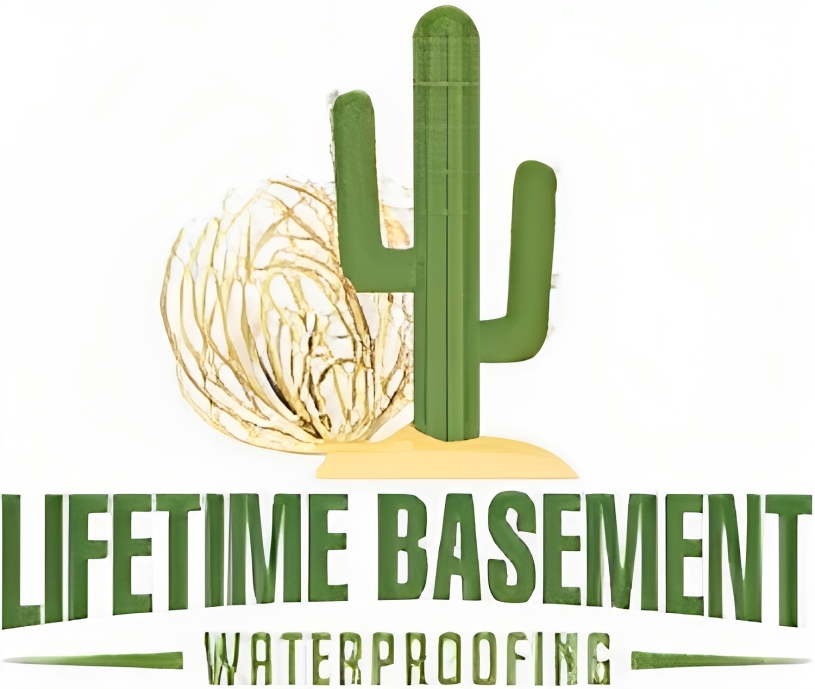
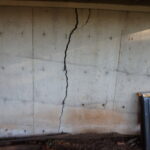
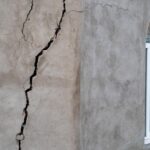
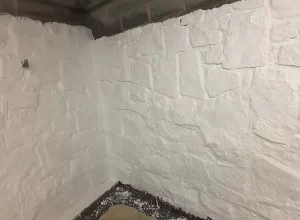

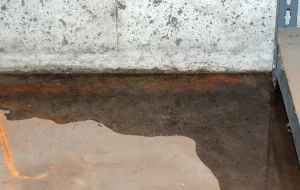
No comment yet, add your voice below!